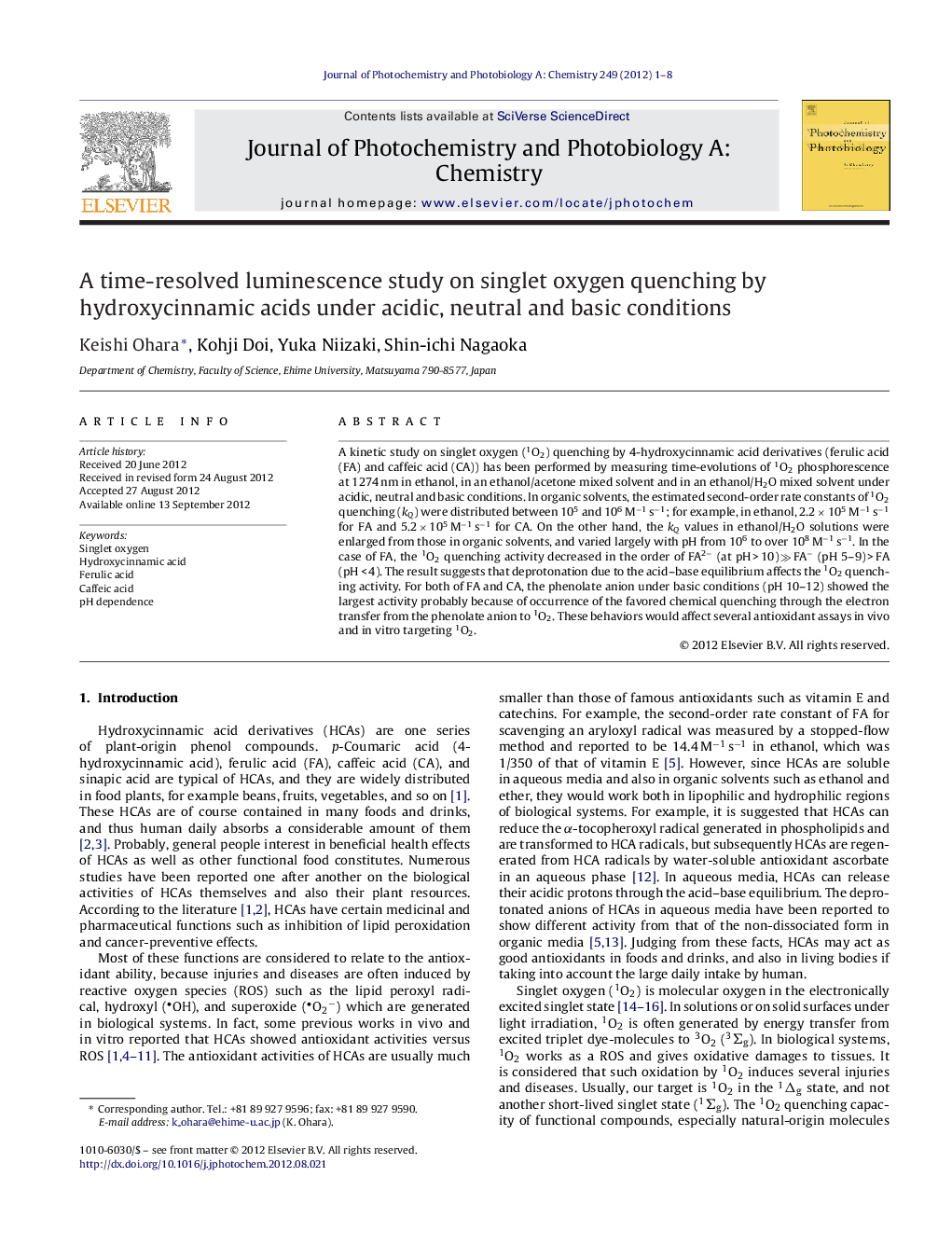| Article ID | Journal | Published Year | Pages | File Type |
|---|---|---|---|---|
| 26742 | Journal of Photochemistry and Photobiology A: Chemistry | 2012 | 8 Pages |
A kinetic study on singlet oxygen (1O2) quenching by 4-hydroxycinnamic acid derivatives (ferulic acid (FA) and caffeic acid (CA)) has been performed by measuring time-evolutions of 1O2 phosphorescence at 1274 nm in ethanol, in an ethanol/acetone mixed solvent and in an ethanol/H2O mixed solvent under acidic, neutral and basic conditions. In organic solvents, the estimated second-order rate constants of 1O2 quenching (kQ) were distributed between 105 and 106 M−1 s−1; for example, in ethanol, 2.2 × 105 M−1 s−1 for FA and 5.2 × 105 M−1 s−1 for CA. On the other hand, the kQ values in ethanol/H2O solutions were enlarged from those in organic solvents, and varied largely with pH from 106 to over 108 M−1 s−1. In the case of FA, the 1O2 quenching activity decreased in the order of FA2− (at pH > 10) ≫ FA− (pH 5–9) > FA (pH < 4). The result suggests that deprotonation due to the acid–base equilibrium affects the 1O2 quenching activity. For both of FA and CA, the phenolate anion under basic conditions (pH 10–12) showed the largest activity probably because of occurrence of the favored chemical quenching through the electron transfer from the phenolate anion to 1O2. These behaviors would affect several antioxidant assays in vivo and in vitro targeting 1O2.
Graphical abstractFigure optionsDownload full-size imageDownload as PowerPoint slideHighlights► Surroundings dependence of 1O2 quenching activities of ferulic and caffeic acids. ► Rate constants for 1O2 quenching were controlled by the deprotonation with pH. ► The phenolate anion showed extremely large 1O2 quenching activity. ► Solvent-containing water enlarged the rate constants for 1O2 quenching.
